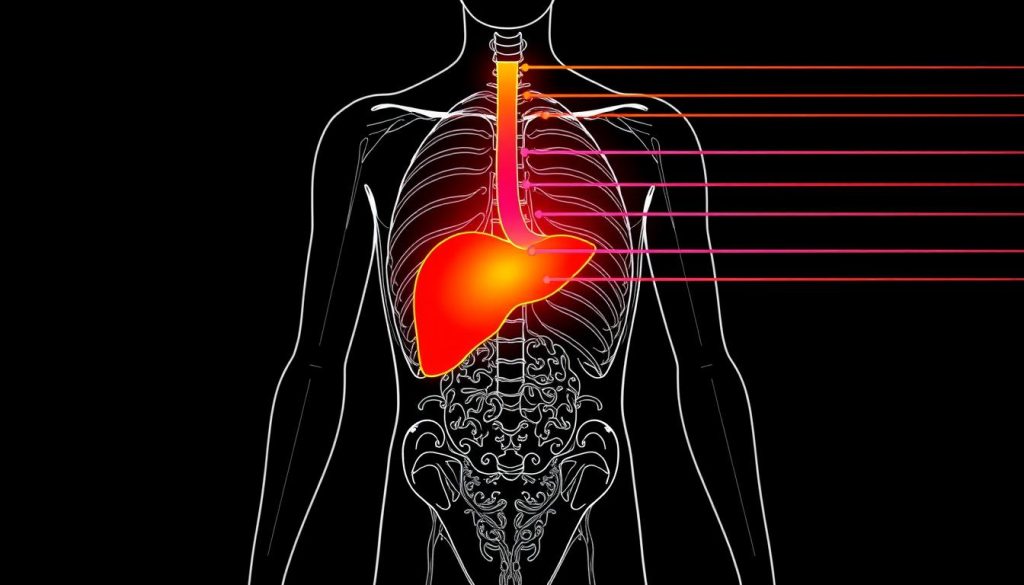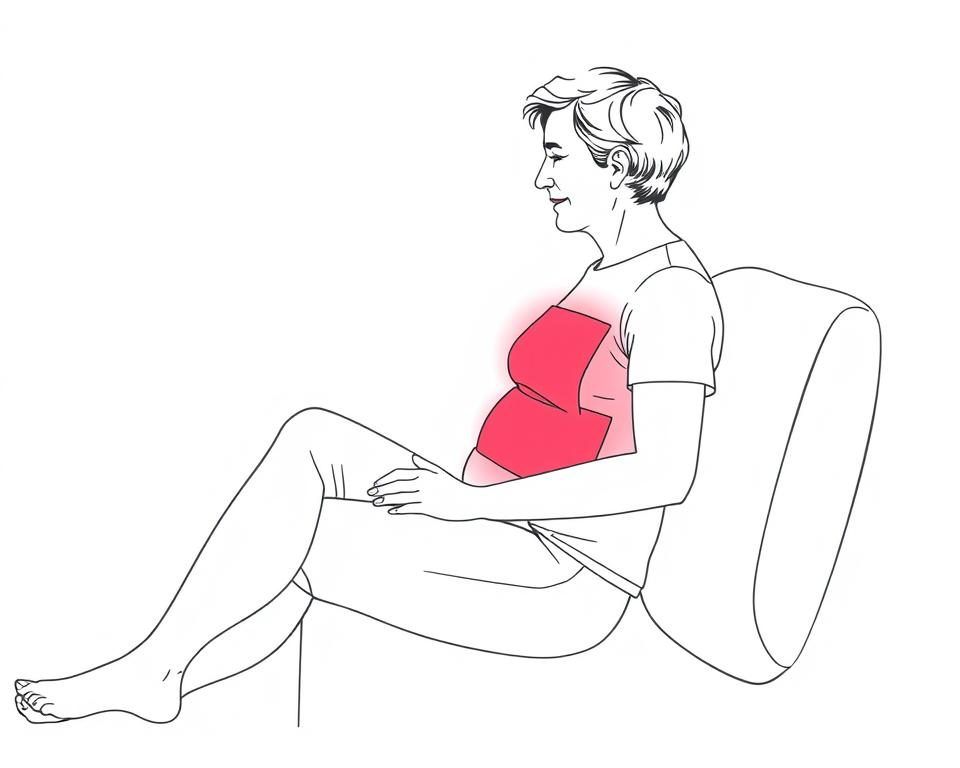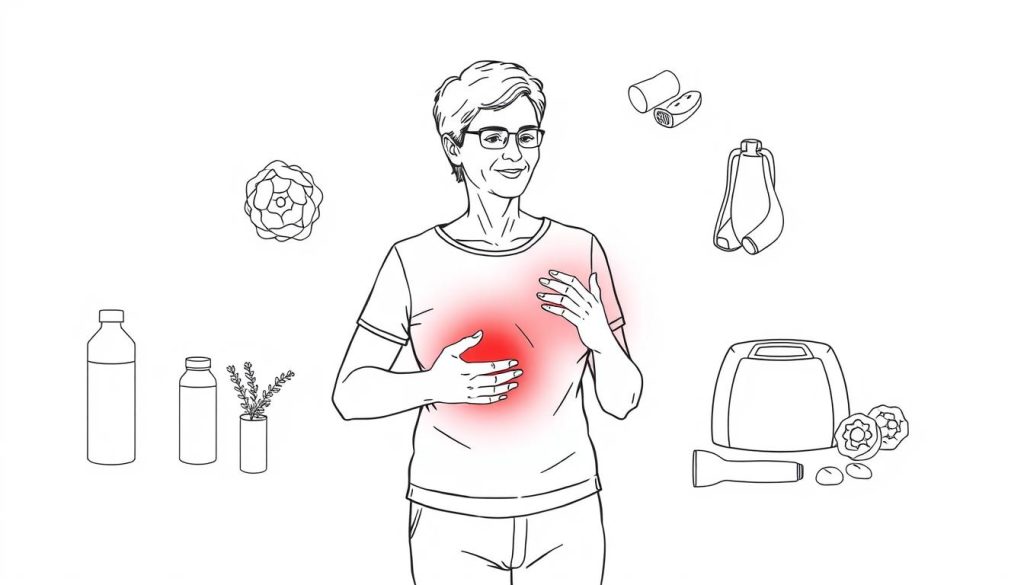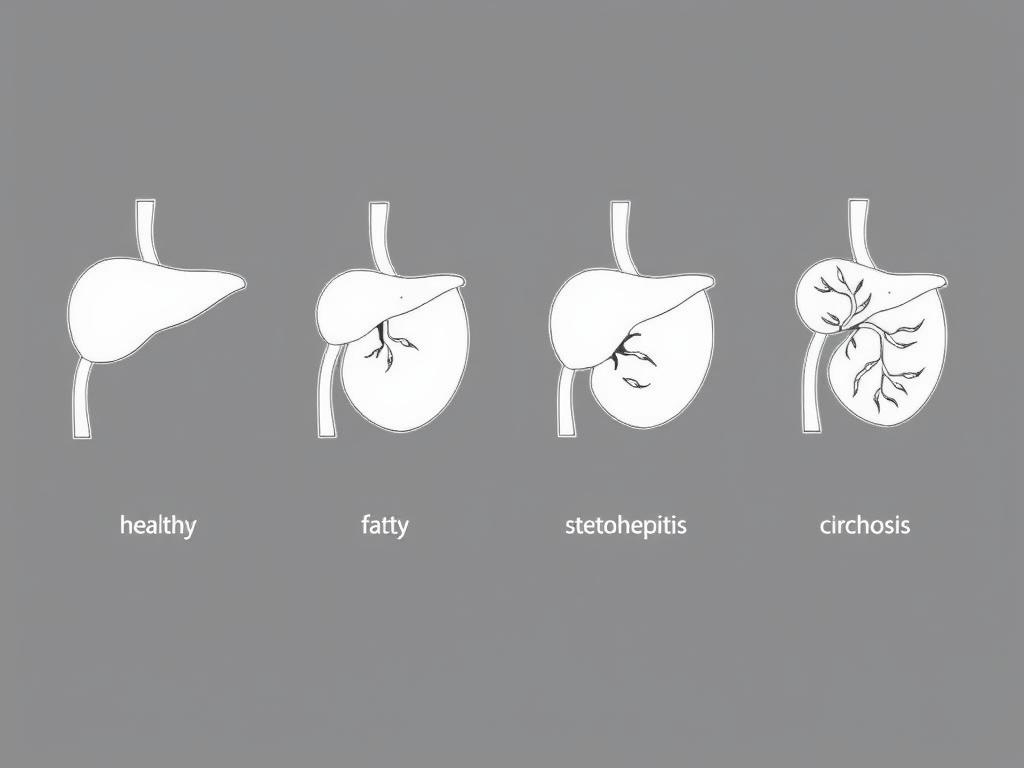Fatty liver disease affects approximately 25% of adults globally, making it one of the most common liver conditions worldwide. Non-alcoholic fatty liver disease (NAFLD) occurs when excess fat accumulates in liver cells, potentially leading to inflammation, scarring, and reduced liver function. While lifestyle modifications remain the primary treatment approach, emerging research suggests red light therapy may offer promising support for liver health.
As an evidence-based health researcher, I’ve analyzed the latest clinical studies on photobiomodulation (the scientific term for red light therapy) and its potential applications for liver health. This article explores how specific wavelengths of red and near-infrared light may help manage fatty liver conditions, the mechanisms behind these effects, and how to choose the right device for optimal results.
Understanding Fatty Liver Disease: Causes and Concerns
Fatty liver disease develops when fat makes up more than 5% of the liver’s weight. The condition typically falls into two categories: alcohol-related fatty liver disease and non-alcoholic fatty liver disease (NAFLD). NAFLD has become increasingly prevalent, affecting people who drink little to no alcohol but have risk factors like obesity, type 2 diabetes, or metabolic syndrome.
Left untreated, fatty liver can progress to more serious conditions. About 20% of people with NAFLD develop non-alcoholic steatohepatitis (NASH), an aggressive form characterized by liver inflammation that can lead to fibrosis, cirrhosis, and even liver cancer (Younossi et al., 2018).
Conventional treatments focus on lifestyle modifications—weight loss, dietary changes, and increased physical activity. However, these approaches can be challenging to maintain, and many patients seek complementary therapies to support their liver health journey. This is where red light therapy has begun to show promise as a supportive intervention.
How Red Light Therapy May Support Liver Health
Red light therapy (RLT) uses specific wavelengths of red and near-infrared light to penetrate tissues and stimulate cellular function. When applied to the liver area, these wavelengths can reach the organ and potentially trigger several beneficial mechanisms.
Mitochondrial Enhancement and ATP Production
The primary mechanism behind red light therapy’s effects involves the stimulation of mitochondria, the cellular powerhouses. When specific wavelengths (typically 630-660nm red light and 810-850nm near-infrared light) reach the liver cells, they activate an enzyme called cytochrome c oxidase in the mitochondria.
This activation increases the production of adenosine triphosphate (ATP), the energy currency of cells. A clinical trial by Ferraresi et al. (2015) demonstrated that near-infrared light therapy significantly increased ATP production in human muscle tissue, suggesting similar effects may occur in liver cells.

Reducing Inflammation and Oxidative Stress
Chronic inflammation plays a central role in the progression of fatty liver disease. Red light therapy has demonstrated anti-inflammatory effects in multiple studies. Research by Hamblin (2017) showed that red and near-infrared light can reduce inflammatory markers and oxidative stress throughout the body.
For liver specifically, a 2018 study published in the Journal of Photochemistry and Photobiology found that red light therapy reduced inflammatory cytokines and oxidative damage in liver tissue of subjects with induced liver injury, suggesting potential benefits for humans with similar conditions.
Improving Metabolic Function
Metabolic dysfunction is a key factor in fatty liver disease. Red light therapy may help improve metabolic parameters related to liver health. A clinical trial by Sene-Fiorese et al. (2015) found that photobiomodulation combined with exercise improved lipid profiles and reduced body fat in obese women—factors directly related to fatty liver disease.
The 1064nm wavelength, included in some advanced red light therapy devices like the Total Spectrum series from RLT Home, has shown particular promise for metabolic health. This longer wavelength penetrates deeper into tissues and may help with fat metabolism, potentially benefiting those with fatty liver conditions.
Clinical Evidence for Red Light Therapy and Liver Health
While research specifically targeting red light therapy for fatty liver disease in humans is still emerging, several promising studies suggest potential benefits:
“Low-level laser therapy combined with a healthy diet produced significant improvements in liver enzyme levels, lipid profiles, and BMI in patients with non-alcoholic fatty liver disease compared to diet alone.”
This controlled clinical trial demonstrated that when red light therapy was added to a Mediterranean diet for older adults with NAFLD, participants showed greater improvements in liver function tests and metabolic markers than those following the diet alone.
Another significant study by Guo et al. (2020) found that photobiomodulation reduced hepatic lipogenesis (fat formation in the liver) and enhanced insulin sensitivity through activation of specific cellular pathways. While this study used an animal model, the mechanisms identified are relevant to human metabolism.

A 2019 review in the International Journal of Molecular Sciences examined multiple studies on photobiomodulation for liver conditions and concluded that red light therapy shows promise for reducing liver inflammation, improving mitochondrial function, and supporting liver regeneration—all crucial factors for those with fatty liver disease.
Choosing the Right Red Light Therapy Device for Liver Health
When selecting a red light therapy device for liver support, several factors deserve consideration: wavelength combination, power output, treatment area coverage, and overall quality. Let’s compare some leading options:
Key Factors for Effective Liver Treatment
Optimal Wavelengths
For liver applications, devices should include both red (630-660nm) and near-infrared wavelengths (810-850nm). The addition of 1064nm wavelength may provide extra benefits for fat metabolism. The Total Spectrum Compact from RLT Home offers seven clinically-validated wavelengths including 630nm, 660nm, 810nm, 830nm, 850nm, and the deeper-penetrating 1064nm.
Coverage Area
Since the liver is a large organ located in the upper right abdomen, adequate coverage is important. Smaller devices may require longer treatment times or multiple positions. Mid-size panels like the Total Spectrum Compact (30″ × 12″) provide efficient coverage for the liver area in a single session.
Comparing Leading Devices
| Device | Coverage | Wavelengths | Best For | Notable Feature |
| RLT Home Total Spectrum Compact | Mid-size (30″ × 12″) | Seven (incl. 1064nm) | Targeted liver treatment | Zero EMF at treatment distance |
| PlatinumLED BioMax | Various sizes | Five wavelengths | High irradiance | Strong power output |
| Joovv Solo | Medium (21″ × 14″) | Red and NIR | Modular design | Expandable system |
| Mito Red Light | Various options | Red and NIR | Budget-friendly | Affordable entry models |
For full-body treatment that includes the liver area, larger panels like the Total Spectrum Max (48″ × 12″) or Total Spectrum Ultra (64″ × 12″) provide comprehensive coverage. PlatinumLED offers excellent irradiance (power output), while Joovv’s modular design allows for system expansion. For those on a budget, Mito Red Light provides cost-effective options with fewer features.
Practical Treatment Protocols for Fatty Liver Support
Based on clinical research and practitioner experience, here are recommended protocols for using red light therapy to support liver health:
Treatment Guidelines
For targeted liver treatment, the Total Spectrum Mini (12″ × 12″) can be effective when positioned directly over the liver area, though treatment times may need to be extended due to its smaller size. For more efficient coverage, the Total Spectrum Compact provides an ideal balance of treatment area and portability.
Important: Red light therapy should be used as a complementary approach alongside medical care for fatty liver disease. Always consult with your healthcare provider before beginning any new treatment protocol, especially if you have diagnosed liver conditions.
Integrating Red Light Therapy with Other Liver Support Strategies
For optimal results, red light therapy works best as part of a comprehensive approach to liver health. Consider these complementary strategies:
Dietary Approaches
The Mediterranean diet has shown particular promise for fatty liver disease. Rich in olive oil, nuts, fish, fruits, and vegetables, this eating pattern supports liver health by reducing inflammation and improving metabolic parameters. When combined with red light therapy, these dietary changes may have synergistic effects, as demonstrated in the Nagyy et al. study (2021).
Limiting processed foods, refined carbohydrates, and added sugars is equally important, as these can contribute to fat accumulation in the liver. Consider working with a registered dietitian who specializes in liver health for personalized guidance.
Physical Activity
Regular exercise is a cornerstone of fatty liver management. Both aerobic activities (walking, swimming, cycling) and resistance training have been shown to reduce liver fat content, even without significant weight loss. Aim for at least 150 minutes of moderate-intensity exercise per week.
Interestingly, some research suggests that red light therapy before exercise may enhance performance and recovery, potentially making your workout routine more effective and sustainable. The Total Spectrum Compact’s pre-built “Pain & Inflammation” mode can be useful for post-exercise recovery.
Stress Management and Sleep
Chronic stress and poor sleep quality can negatively impact liver health by increasing inflammation and disrupting metabolism. Practices like meditation, deep breathing, and consistent sleep schedules support liver function. Red light therapy may also help improve sleep quality through its effects on melatonin production, creating another potential benefit for liver health.
The National Institute of Diabetes and Digestive and Kidney Diseases (NIDDK) provides comprehensive resources on managing fatty liver disease through lifestyle modifications. Their guidelines on NAFLD offer evidence-based recommendations that can complement your red light therapy regimen.
Conclusion: Is Red Light Therapy Right for Your Liver Health Journey?
The emerging research on red light therapy for fatty liver disease shows promising potential. Through mechanisms like enhanced mitochondrial function, reduced inflammation, and improved metabolic parameters, this non-invasive approach may offer valuable support for those concerned about liver health.
While more human clinical trials are needed to establish standardized protocols specifically for fatty liver conditions, the existing evidence suggests that red light therapy could be a worthwhile addition to a comprehensive liver health strategy that includes proper nutrition, regular physical activity, and medical supervision.

When selecting a device, consider factors like wavelength combination, coverage area, and quality. The Total Spectrum series from RLT Home offers clinically-validated wavelengths and zero EMF exposure at treatment distance, making it worth considering alongside other reputable brands like PlatinumLED, Joovv, and Mito Red Light.
Remember that consistency is key with red light therapy. A regular protocol of 3-5 sessions per week, maintained over several months, provides the best opportunity to support your liver health goals. As with any wellness approach, consult with healthcare providers, especially if you have diagnosed liver conditions.
— David, independent RLT researcher

